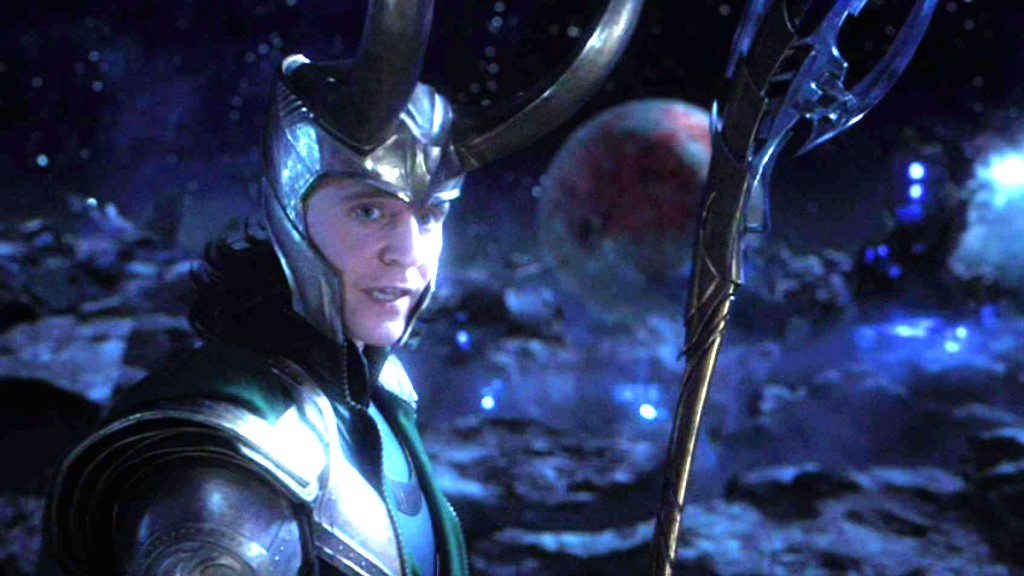The Avengers part 7
At the top of Act II of The Avengers we begin where we began Act I, in space, with The Other and Loki, checking in. They talk about The Chitauri, to remind us that that’s a thing, they talk about the mysterious boss at the other end of the jukebox, and remind us that the boss wants The Tesseract, Or Else. We also learn that Loki was once “the rightful king of Asgard,” which gives him the horse in this race. Loki may not be the Ultimate Boss of The Avengers, but he has a much more compelling motivation: revenge against his brother Thor, who exiled him. This narrative stroke, to make two characters from Thor the hinge of the screenplay, is masterful: the traditional studio approach would be to take the wild cards of the franchise (Norse gods!) and ignore them compleely, or give them only token attention. But to put Loki and Thor at the middle of this gigantic tentpole money-making machine provides a useful bridge between the mundane (Hawkeye), the fantastic-but-still-believable (Iron Man), the straight-out fantastic (Capt America, Hulk), and the gonzo sci-fi alien spectacle of The Chitauri. The mere fact that one movie embraces all these characters is daring enough, but the screenplay for The Avengers distrubutes its narratve effects so judiciously and balances its characters so well that a common, non-comics-reading audient sees a Norse god taking orders from an alien in a robe and thinks “Okay, sure, I get it.” The fact that Loki’s motivation is both human and not centered on “conquering the universe” but one-upping his good-looking brother gives the narrative an appreciable scale and, thus, creates audience involvement in something patently absurd.
